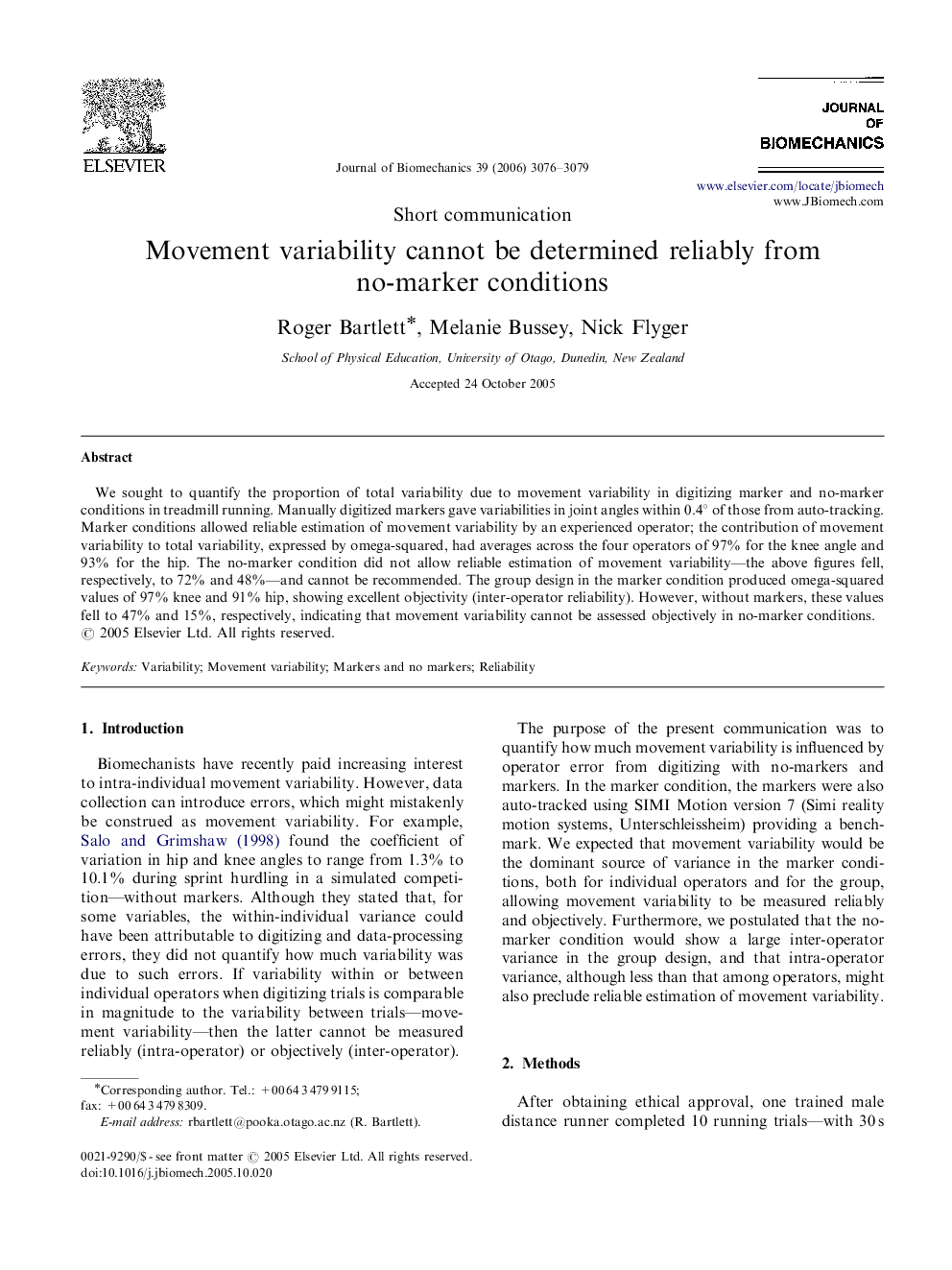| Article ID | Journal | Published Year | Pages | File Type |
|---|---|---|---|---|
| 874492 | Journal of Biomechanics | 2006 | 4 Pages |
We sought to quantify the proportion of total variability due to movement variability in digitizing marker and no-marker conditions in treadmill running. Manually digitized markers gave variabilities in joint angles within 0.4° of those from auto-tracking. Marker conditions allowed reliable estimation of movement variability by an experienced operator; the contribution of movement variability to total variability, expressed by omega-squared, had averages across the four operators of 97% for the knee angle and 93% for the hip. The no-marker condition did not allow reliable estimation of movement variability—the above figures fell, respectively, to 72% and 48%—and cannot be recommended. The group design in the marker condition produced omega-squared values of 97% knee and 91% hip, showing excellent objectivity (inter-operator reliability). However, without markers, these values fell to 47% and 15%, respectively, indicating that movement variability cannot be assessed objectively in no-marker conditions.
